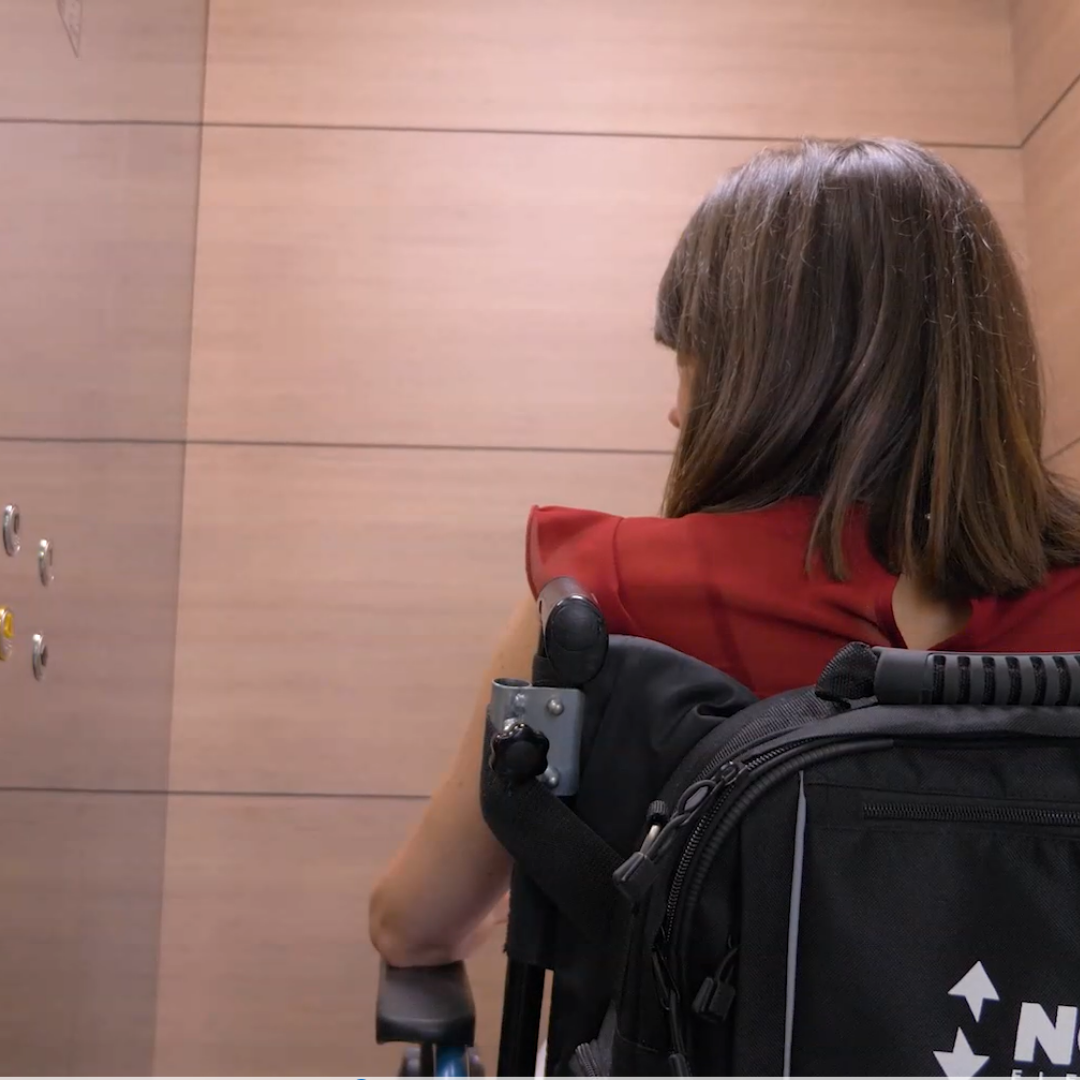In recent years there have been very important developments in the elevator sector and, among these, Universal Design stands out. Much more than a concept: it is “design for human diversity, social inclusion, and equality”. This simple goal is important for everyone, namely to facilitate equal opportunities for participation in every aspect of society. And, in this context, free access to any architecture, whether new or old.
This is a fundamental aspect for NOVA Elevators, which has always been committed not only to providing cutting-edge services and products in the field of lifting solutions but also to including, raising the quality of life of each person. People Elevation Company means having the responsibility and the ability to interpret dreams and needs of the present and the near future.
The principles of Universal Design for lifts
The Directive 2014/33/EU of the European Parliament and Council of 26th of February 2014 (for the harmonization of the laws of the Member States relating to lifts and safety components for lifts) opened the debate years ago, up to a directive after directive, to UNI EN 81 70, which provides additional requirements for people with disabilities.
The standard specifies the minimum requirements for the safe and independent access and use of lifts by people, including those with disabilities.
A little technical-legal focus to understand that what NOVA Elevators has been trying to pursue for years has actually been on the agenda for a relatively short time. The principles of Universal Design were classified in 1997 by a working group led by Ronald Mace (North Carolina State University) and included architects, designers, engineers, and researchers. To be precise we are talking about:
- Fairness: this indicates that the design must provide the same meaning of use to all users, avoiding segregation or categorization
- Flexibility: it must adapt to the user’s ability, allowing a wide range of preferences to be applied and promotes accuracy and precision.
- Simplicity: the purpose must be intuitive, regardless of the user’s experience, knowledge, language, or concentration level.
- Perceptibility: the design must communicate the information necessary for use and user in an understandable and effective manner, regardless of the environmental conditions or his ability to sense
- Error tolerance: it is necessary to provide warnings on errors and dangers, but above all to minimize risks, dangers, and any adverse consequences of accidental or unintentional use
Containment of physical effort: means the possibility of use with minimal physical or sensory effort. - Sufficient sizes and spaces: regardless of body size, posture and mobility, the universal design must make the space suitable for access and use by any person.
The value of accessibility is universal
It goes without saying that these principles face numerous challenges, especially when it comes to mobile platforms such as elevators.
Often, when it comes to new installations, you have to deal with architectural harmonization.
We have been working on this for years, in contexts that seem impossible to resolve. We can mention the study and tailor-made design of a panoramic lift for outdoor use in a historic building from the 1200s in Venice, bound by the Superintendence for Fine Arts. Or the more recent mini-lift inserted in a historic building from the 1600s in Busto Arsizio.
These are examples of how much the application of Universal design can become complicated when it comes to the architectural heritage, especially the Italian one: historic buildings, ancient palaces, but also places of culture (such as museums and theaters) and even squares, historical or archaeological sites.

Full access to the elevators
In one of the key steps, Directive 2014/33/EU states “The harmonized standards relating to this directive should also take full account of the United Nations Convention on the rights of persons with disabilities”.
This means that the structure and cabin must be designed and constructed in such a way that the characteristics do not hinder or prevent access and use by disabled people and so as to allow for the appropriate adjustments intended to facilitate use. Today it seems obvious, dictated by common sense, but it has not always been this way.
NOVA Elevators constantly works to break down architectural barriers. To this date, the problem can be easily solved by installing, for example, a lifting platform (or lift for the disabled) or a mini lift (which does not require major masonry work), or, when the building has many floors, an elevator.
Accessibility to historic buildings: the value of Universal Design
Everything we have told so far is preparatory to an important factor: respecting the environment and people. It is not just a company philosophy of NOVA Elevators, but a real technological and engineering approach, which allows us to meet the different needs at stake, whether they come from an architect, a condominium administrator, or any institution.
This involves respect for Universal Design and a great work of study and design. As we did in Venice, where all the materials have been chosen and matched with care, to respect the needs of transparency and durability expressed by the customer and the Superintendency. But not only that, because we have thought about silence, energy efficiency, and correct operation of the lifting system in relation to the variation of the water level, up to a glass shelter to repair the users of the lift in case of rain and guaranteed accessibility for all.
For NOVA Elevators all this means providing quality solutions but above all enriching the architectural value. Contact us now, if you want to learn more about the opportunities for bespoke elevators, with attention to every detail and in full respect of design, people, and places.